- English
- Sales & Support:+86-15015013003
| Place of Origin: | coffee bags factory |
| Brand Name: | MSTPACK |
| Certification: | BPI Certificate, BRC, DIN, ABA |
| Model Number: | PCB031 |
| Minimum Order Quantity: | 10000pcs |
|---|---|
| Price: | US$ 0.13-0.35 / pcs |
| Packaging Details: | Carton |
| Delivery Time: | 10-15days |
| Payment Terms: | L/C, T/T, Western Union |
| Supply Ability: | 100000 tons/year |
Flat bottom coffee bags are an innovative and stylish packaging solution designed to meet the specific needs of the coffee industry. Combining the best features of traditional flat pouches and stand-up bags, these bags offer a unique flat bottom design that provides both stability and versatility. The distinctive structure of flat bottom coffee bags includes a flat base and expandable side gussets, allowing the bags to stand upright on shelves while accommodating a generous amount of coffee.
The flat bottom design not only enhances the aesthetic appeal of the bags but also offers practical advantages. These bags provide an ideal platform for showcasing your premium coffee products, as they remain upright, ensuring maximum visibility and easy product recognition on store shelves. The large front panel offers ample space for branding, logos, and eye-catching designs, allowing you to establish a strong brand identity and attract customers' attention.
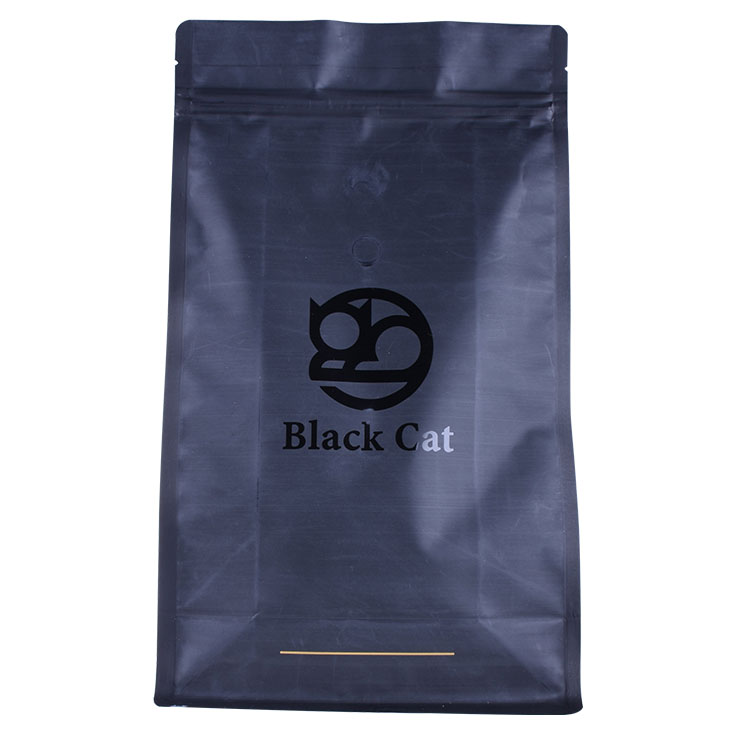 | 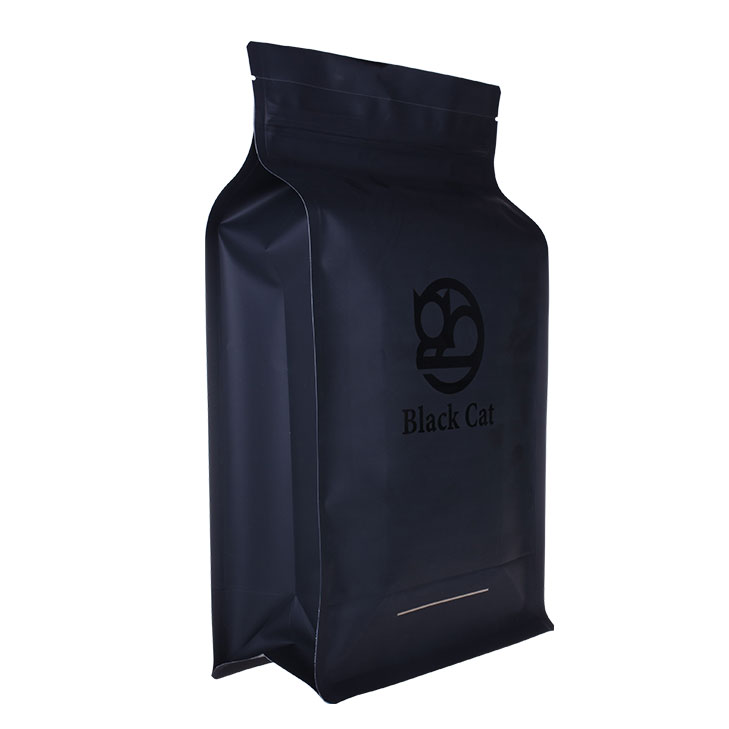 | 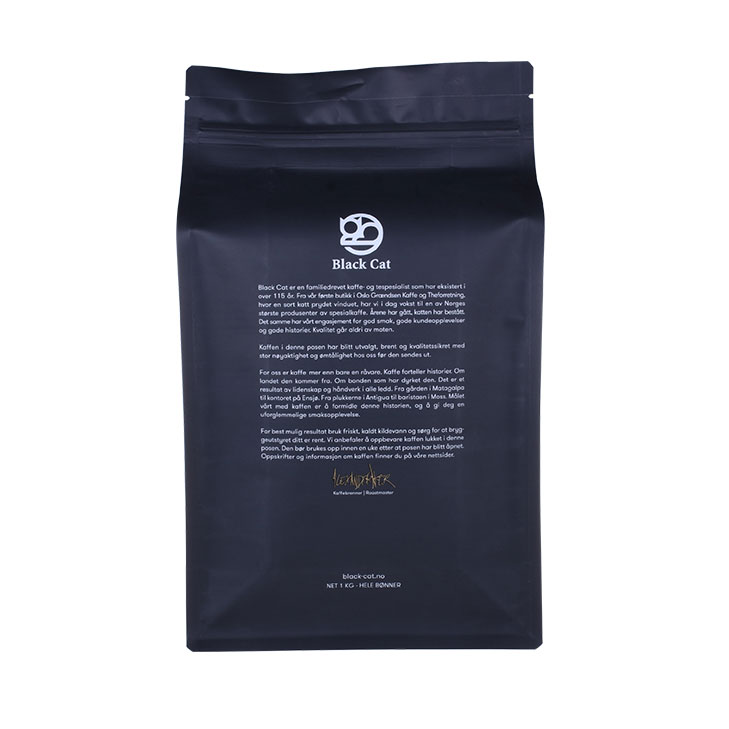 |
Manufacturers and coffee brands appreciate the functional benefits of flat bottom coffee bags. The flat base facilitates efficient filling during the packaging process, minimizing the risk of spills and ensuring a smooth production workflow. The expandable side gussets allow the bags to accommodate various quantities of coffee, making them suitable for both retail and bulk packaging.
Furthermore, flat bottom coffee bags often come with resealable closures such as zippers or tin-ties. This feature preserves the freshness and flavor of the coffee by allowing customers to reseal the bags after opening, ensuring a longer shelf life for the product.
Whether you're packaging whole coffee beans or ground coffee, flat bottom coffee bags offer an excellent solution that combines practicality, aesthetics, and functionality. Their unique design and quality materials make them an appealing choice for coffee brands looking to make a strong impact in the market.
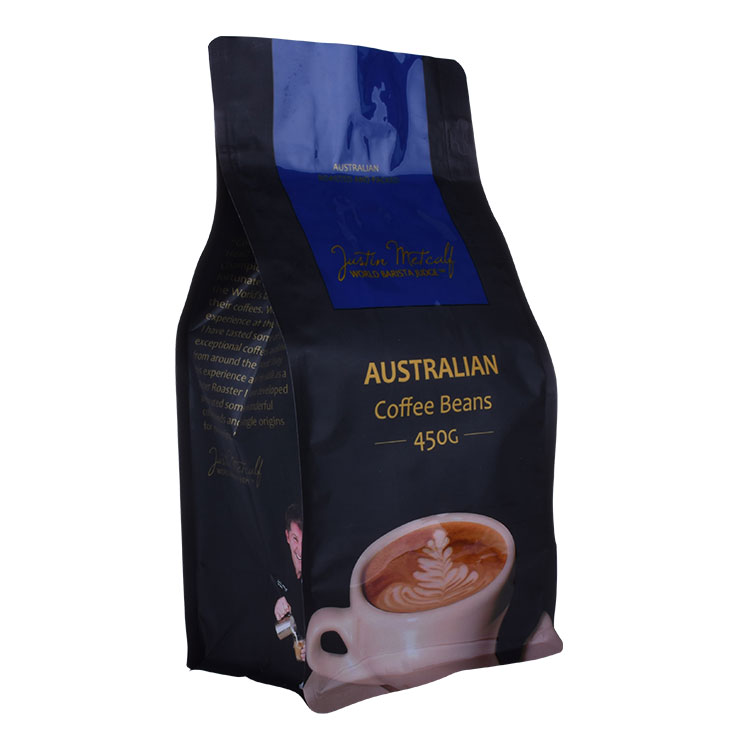 | 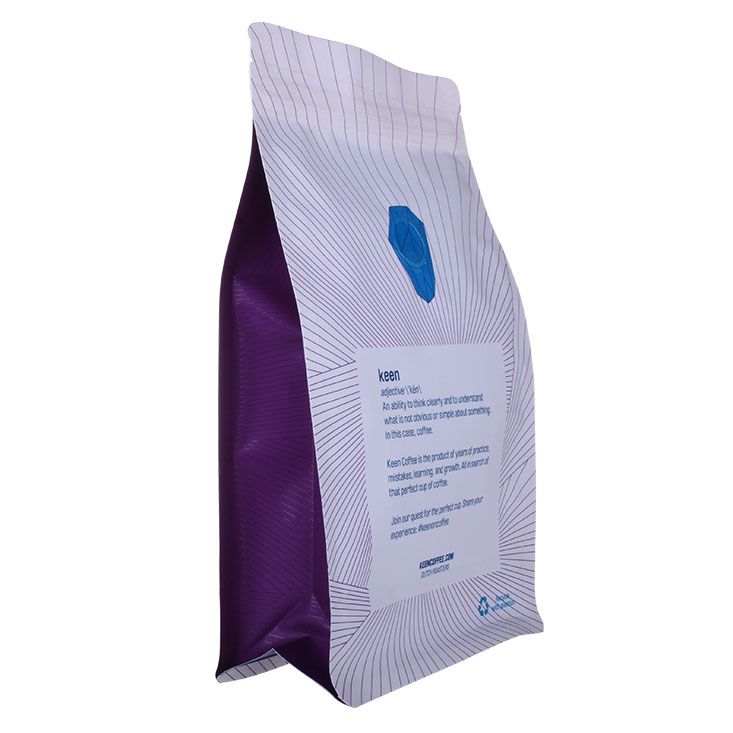 |
Detailed introduction of flat bottom coffee bags provide by our coffee bags factory, we are a professional coffee bags manufacturer from china, all the coffee bags made by us are high quality, welcome to wholesale differnet types of flat bottom coffee bags from us to know more about flat bottom coffee bags, such as material, process, color, type, benefits, printing, applications and so on. following is the prefect description of our high quality flat bottom coffee bags.
Specification of flat bottom coffee bags | Description of flat bottom coffee bags | Applications of flat bottom coffee bags |
Manufacturing process of flat bottom coffee bags | Advantages of flat bottom coffee bags | Features of flat bottom coffee bags |
Shapes of flat bottom coffee bags | Classification of flat bottom coffee bags | Benetits of flat bottom coffee bags |
Technology of flat bottom coffee bags | Printing of flat bottom coffee bags | Types of flat bottom coffee bags |
Colors of flat bottom coffee bags | Material of flat bottom coffee bags | eco friendly of flat bottom coffee bags |
| MATERIAL: | Kraft Paper / PET/ PE | COLOR: | Up to 10 colors |
|---|---|---|---|
| SIZE: | Customized | SURFACE HANDLE: | Digital Printing |
| FREE SAMPLES: | Available | TYPE: | Flat Bottom Bag |
| USAGE: | Coffee, Tea, Snack, Chocolate, Cookie, Candy, Nuts, Other Food | SEAL & HANDELING: | Tin Tie Closure |
| PORT OF SHIPPING: | Jiangmen | FAST DELIVERY: | 7-10 Work Days |
| HIGH LIGHT: | Flat bottom coffee bags wholesale flat bottom coffee packaging | ||
High quality flat bottom coffee bags sampes made from our coffee bags factory, custom the size, color, types you like from us, we will give you best flta bottom coffee bags wholesale services.
| Description of flat bottom coffee bagsFlat bottom coffee bags are a specialized packaging solution designed to provide optimal preservation and presentation for coffee products. These bags combine both practicality and aesthetic appeal, making them a popular choice for coffee brands looking to enhance their packaging. The unique flat bottom design, also known as a quad seal or block bottom, offers several advantages over traditional packaging options: Key Features:
Flat bottom coffee bags offer both functional and aesthetic benefits. They effectively preserve the quality of coffee beans or grounds by providing an airtight and protective environment. Additionally, their visually appealing design helps coffee brands make a memorable impression on consumers, enhancing the overall customer experience. Whether in a retail store or online, these bags play a crucial role in catching the eye of potential buyers and communicating the quality of the enclosed coffee product. |
Flat bottom coffee bags are typically made from a combination of materials that offer the necessary barrier properties, strength, and visual appeal. The choice of material depends on factors such as product protection, branding, and sustainability considerations. Here are some common materials used for flat bottom coffee bags:
Kraft Paper:
Plastic Films:
Foil Laminates:
Metalized Films:
Multi-Layer Structures:
Biodegradable and Compostable Materials:
Recyclable Materials:
Clear Films for Windows:
Coatings and Barrier Additives:
Ultimately, the choice of material depends on the specific requirements of the coffee product, branding strategy, and sustainability goals of the coffee manufacturer. The materials used in flat bottom coffee bags are carefully selected to provide an effective combination of protection, functionality, and visual appeal.
| Manufacturing process of flat bottom coffee bagsThe manufacturing process of flat bottom coffee bags involves several steps, from material selection to final packaging. Here's an overview of the typical manufacturing process for producing these bags:
The exact manufacturing process can vary depending on the specific equipment and technologies used by different manufacturers. However, these steps provide a general overview of how flat bottom coffee bags are typically produced. The goal is to create packaging that preserves the coffee's quality, represents the brand effectively, and meets consumer expectations. |
The technology behind flat bottom coffee bags involves a combination of manufacturing processes, machinery, and design considerations to create a functional and visually appealing packaging solution. Here's an overview of the key technologies involved:
Bag Design and Graphics:
Printing:
Bag Forming:
Side Gusset Formation:
Valve Integration:
Barrier Coatings and Laminates:
Resealable Closures:
Clear Windows:
Quality Control and Testing:
Sustainability Solutions:
Customization and Finishing:
Materials Handling and Packaging:
The technology behind flat bottom coffee bags continues to advance, incorporating innovations in materials, printing, and sustainability. Manufacturers aim to balance protection, aesthetics, and functionality to create packaging that not only preserves the coffee's quality but also captivates consumers and enhances the overall coffee experience.
The printing process for flat bottom coffee bags involves several steps to apply branding, designs, information, and graphics onto the bag material. Here's an overview of the typical printing process for these bags:
Prepress Preparation:
Color Separation:
Plate Making:
Ink Mixing and Preparation:
Printing Process:
Drying and Curing:
Quality Control:
Additional Finishing (Optional):
Clear Window Attachment (If Applicable):
Final Inspection:
The printing process for flat bottom coffee bags requires precision and attention to detail to ensure that the bags meet branding standards and accurately represent the product. State-of-the-art printing technologies and color management systems play a crucial role in achieving vibrant and high-quality prints that enhance the overall visual appeal of the bags.
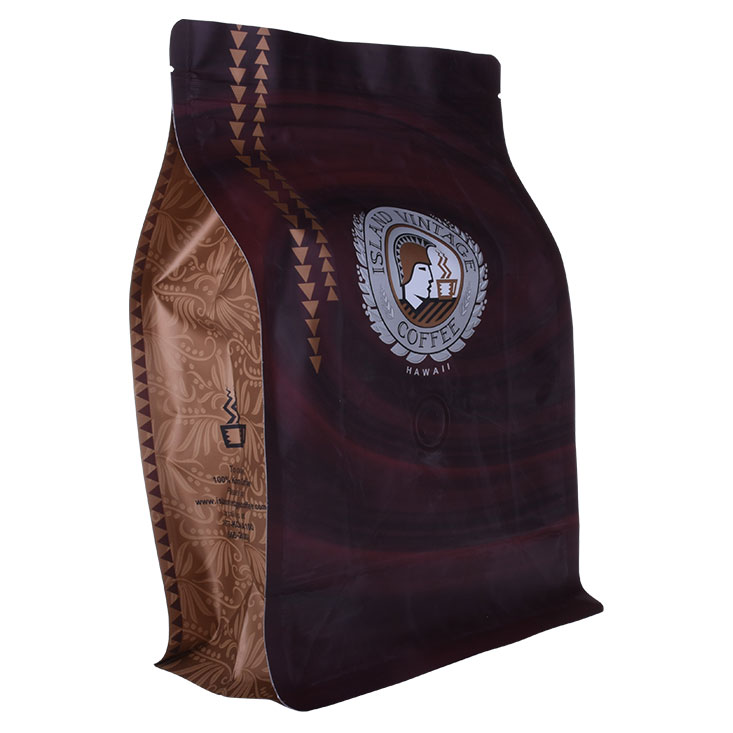 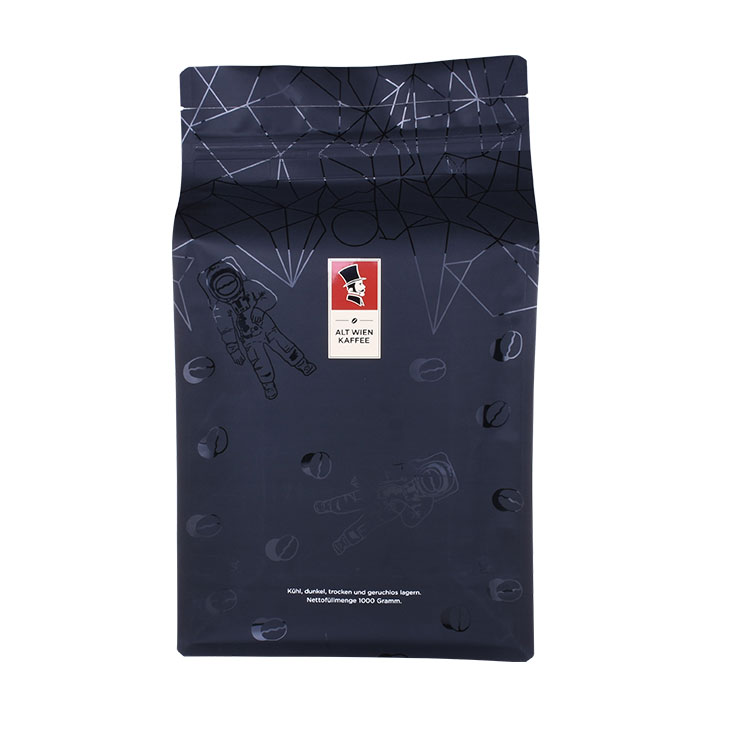 | 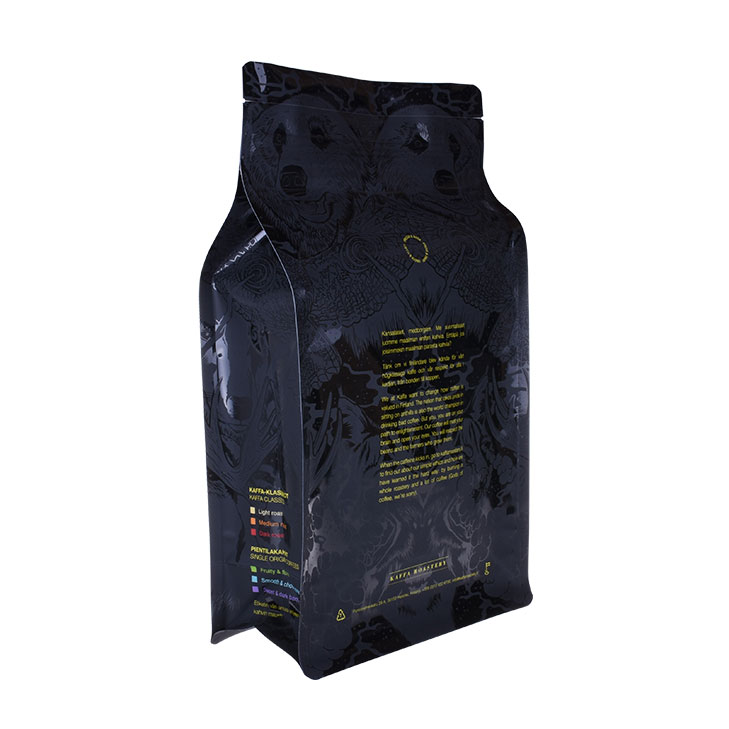 |
Applications of flat bottom coffee bagsFlat bottom coffee bags find versatile applications in the coffee industry due to their practicality, branding potential, and preservation capabilities. Here are some common applications of flat bottom coffee bags:
The versatility of flat bottom coffee bags makes them a valuable packaging option across various aspects of the coffee industry, from retail to branding and distribution. Their ability to preserve coffee freshness while offering ample space for branding and information makes them a popular choice for coffee producers and sellers. | |
| Bag Size (inches) | Capacity (ounces/grams) | Common Usage |
|---|---|---|
| 3 x 2.5 x 7 | 2 - 4 oz / 56 - 113 g | Single-serving, sample bags |
| 4 x 2.75 x 9 | 4 - 8 oz / 113 - 227 g | Small packages, trial sizes |
| 5 x 3.125 x 11 | 8 - 12 oz / 227 - 340 g | Individual bags for small batches |
| 6 x 4.125 x 13 | 12 - 16 oz / 340 - 454 g | Standard retail size for various coffee |
| 7 x 5.125 x 15 | 16 - 20 oz / 454 - 567 g | Larger retail bags or specialty blends |
| 8 x 5.5 x 18 | 20 - 24 oz / 567 - 680 g | Bulk packaging, larger quantities |
| Color | Hex Code | Description |
|---|---|---|
| #8B4513 | Brown | Represents the natural color of coffee. |
| #FFFFFF | White | Clean and minimalist base color. |
| #4C2B1C | Dark Brown | Adds depth and contrast to the design. |
| #FFD700 | Gold | Imparts a sense of luxury and richness. |
| #A0522D | Sienna | Complements the coffee tones. |
| #006400 | Dark Green | Represents the lush coffee-growing regions. |
| #2E2E2E | Charcoal | Provides a modern, sophisticated touch. |
| #D2691E | Chocolate | Enhances the warm and inviting feel. |
Remember, the choice of colors should align with your brand identity, the type of coffee you're packaging, and the emotions you want to evoke. This color palette is just a starting point; you can adjust and customize it to suit your brand's unique aesthetic.
| Feature | Description |
|---|---|
| Flat Bottom Design | Rectangular shape with a flat, stable base and expandable side gussets. |
| Side Gussets | Gussets allow the bag to expand as it's filled, maintaining stability. |
| One-Way Degassing Valve | Valve releases gas while preventing air from entering, preserving freshness. |
| Material Options | Available in various materials like kraft paper, plastic, and laminates. |
| Barrier Properties | Materials with excellent barrier against moisture, oxygen, and light. |
| Resealable Closure | Zipper or heat seal closures for easy resealing after opening. |
| Custom Printing | Customizable printing for branding, logos, information, and designs. |
| Clear Window (Optional) | Transparent window to showcase the contents while maintaining freshness. |
| Sizes | Available in different sizes to accommodate various coffee quantities. |
| Sustainability Options | Some bags are made from eco-friendly or biodegradable materials. |
| Tamper-Evident Seals | Heat-sealed closures provide tamper-evidence for consumer safety. |
| Shelf Presence | Stand-up design and attractive printing enhance shelf visibility. |
| Freshness Preservation | Barrier properties and valve ensure coffee remains fresh. |
| Customization Options | Options for finishes, embossing, debossing, and more. |
| Brand Identity | Bags provide a canvas to communicate the brand's image effectively. |
| Recyclability | Some bags are made from materials that can be recycled. |
| Convenience | Resealable closures offer ease of use for consumers. |
| Versatility | Suitable for various coffee types, from whole beans to ground coffee. |
| Premium Presentation | High-end design and materials convey a premium product image. |
| Protection | Protects coffee from external factors that can degrade quality. |
These features collectively contribute to the functionality, branding potential, and overall effectiveness of flat bottom coffee bags in preserving and presenting coffee products.
| Shape | Description |
|---|---|
| Rectangular with Quad Seal | Most common design with four side gussets. |
| Box Pouch with Block Bottom | Box-like structure enhances stability. |
| Plow Bottom Bag | Side gussets form a plow-like bottom shape. |
| Self-Standing Pouch | Flat bottom allows the bag to stand on its own. |
| Trapezoidal Gussets | Tapered gussets provide a unique visual element. |
| Tin Tie Bags | Resealable closure with flat bottom and gussets. |
| Foldable Flat Bottom Bags | Foldable for storage, expandable when filled. |
| Hybrid Designs | Blend features of flat bottom and stand-up bags. |
| Classification | Description |
|---|---|
| Based on Closure Type | - Resealable Zipper\n- Heat Seal\n- Tin Tie Closure |
| Based on Material | - Kraft Paper\n- Plastic Films\n- Foil Laminates\n- Biodegradable Materials |
| Based on Usage | - Retail Packaging\n- Online Sales\n- Specialty Coffee\n- Subscription |
| Based on Design | - Rectangular with Quad Seal\n- Box Pouch with Block Bottom\n- Plow Bottom |
| - Self-Standing Pouch\n- Trapezoidal Gussets\n- Tin Tie Bags | |
| Based on Sustainability | - Eco-Friendly\n- Recyclable\n- Compostable |
| Based on Application | - Retail\n- Specialty Coffee\n- Wholesale Distribution\n- Cafes and Shops |
| Type | Description |
|---|---|
| Rectangular Quad Seal | Most common type with a rectangular base and four side gussets for expansion. |
| Box Pouch with Block Bottom | Box-like structure with a stable block bottom for enhanced stability. |
| Plow Bottom | Gussets form a plow-like shape at the bottom when the bag is filled. |
| Self-Standing Pouch | Designed to stand upright on its own due to the flat bottom. |
| Trapezoidal Gusset | Gussets that taper from top to bottom, offering a unique visual appearance. |
| Tin Tie | Equipped with a resealable tin tie closure for convenient resealing. |
| Foldable Flat Bottom | Designed to fold when empty for space-saving storage and expand when filled. |
| Hybrid Design | Blends features of flat bottom and stand-up pouches for a unique look. |
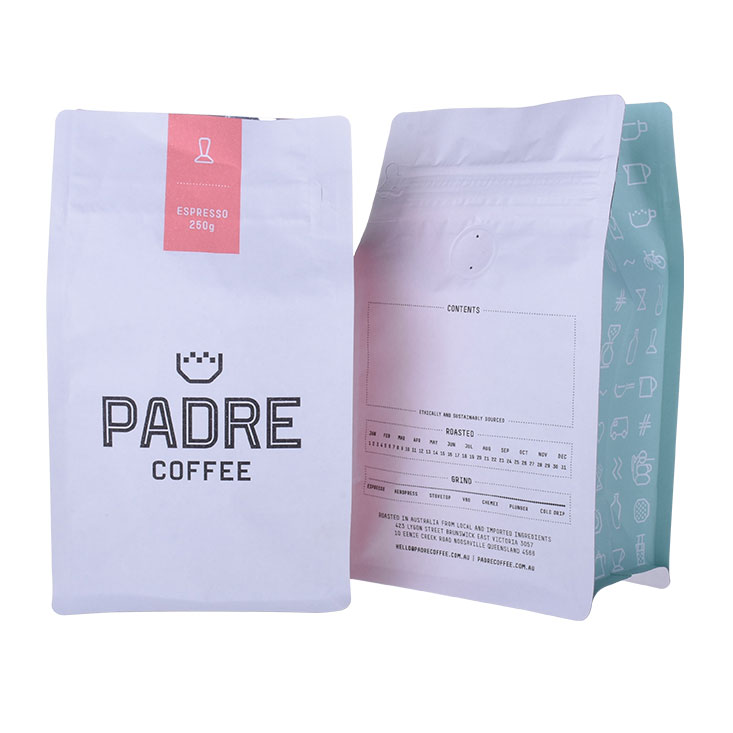
Flat bottom coffee bags offer several advantages that make them a popular choice for packaging coffee products. Here are some key advantages:
Stability and Display: The flat bottom and expandable gussets allow the bag to stand upright on store shelves, enhancing product visibility and creating an appealing display.
Increased Capacity: The gussets enable the bag to expand as it's filled, maximizing the amount of coffee the bag can hold compared to traditional packaging.
Preservation of Freshness: Flat bottom bags often come with one-way degassing valves that allow trapped gas to escape without letting external air in. This helps preserve the freshness of the coffee beans by preventing oxidation and staleness.
Barrier Properties: These bags are designed with materials that provide excellent barrier properties, protecting coffee from moisture, light, and oxygen that can compromise flavor and aroma.
Customization: Flat bottom coffee bags can be fully customized with branding, designs, and information, effectively promoting the coffee brand and communicating its uniqueness.
Ease of Use: Resealable closures, such as zippers or tin ties, allow consumers to reseal the bag after each use, maintaining coffee freshness and convenience.
Convenience in Handling: The bags' flat bottom and easy-to-hold shape make them convenient for consumers to carry, pour, and handle.
Versatility: These bags are suitable for various coffee types, including whole beans, ground coffee, and specialty blends.
Shelf Presence: The design and branding potential of flat bottom bags make them visually appealing, helping products stand out on crowded store shelves.
Sustainability Options: Many manufacturers offer eco-friendly and recyclable options, catering to consumers who prioritize sustainability.
Premium Perception: The combination of practicality and appealing design can give the impression of a premium product, potentially justifying a higher price point.
Airtight Sealing: The resealable closures ensure an airtight seal, preventing moisture and air from entering the bag and compromising coffee quality.
Reduced Product Waste: The ability to reseal the bag helps reduce product waste since consumers can seal the bag after each use, keeping the contents fresh.
Product Differentiation: Flat bottom bags offer a unique packaging design that can set a brand apart from competitors, enhancing recognition and brand loyalty.
Suitable for Different Retail Environments: Whether on store shelves, in cafes, or for online sales, flat bottom bags provide an effective packaging solution for various retail settings.
Overall, the advantages of flat bottom coffee bags contribute to their popularity in the coffee industry by addressing both functional and branding needs while ensuring coffee freshness and quality.
Flat bottom coffee bags offer numerous benefits that make them a preferred choice for packaging coffee products. Here are some of the key benefits:
Enhanced Shelf Presence: The flat bottom design and expandable gussets allow the bags to stand upright, making them visually prominent on store shelves and catching consumers' attention.
Maximized Capacity: The gussets provide extra space as the bag is filled, enabling the bags to hold a larger quantity of coffee compared to traditional packaging.
Freshness Preservation: Equipped with one-way degassing valves, these bags allow trapped gases to escape without permitting air to enter, thus preserving the freshness and flavor of the coffee.
Effective Barrier Protection: Designed with materials that possess superior barrier properties, the bags shield coffee from external elements such as moisture, light, and oxygen that can degrade quality.
Customizable Branding: Flat bottom coffee bags offer ample space for branding, designs, logos, and information, enabling effective brand communication and differentiation.
User-Friendly: Resealable closures like zippers or tin ties allow consumers to conveniently reseal the bags after use, maintaining the coffee's freshness and ease of storage.
Convenient Handling: The bags' flat bottom and ergonomic shape make them easy for consumers to carry, pour, and handle without spillage.
Versatile for Coffee Types: Whether for whole beans, ground coffee, or specialty blends, these bags accommodate various coffee product types.
Eye-Catching Design: Their unique shape and customization options create visually appealing packaging that helps products stand out in competitive markets.
Sustainable Options: Many manufacturers offer environmentally friendly choices, such as biodegradable or recyclable materials, aligning with consumer sustainability preferences.
Premium Presentation: The combination of practicality and attractive design can contribute to a premium product perception, potentially justifying higher pricing.
Air-Tight Seal: Resealable closures ensure an air-tight seal, preventing external factors from compromising the coffee's quality and freshness.
Reduced Waste: The ability to reseal the bags reduces product wastage, as consumers can seal the bag after each use, keeping the contents fresh and extending usability.
Product Differentiation: Flat bottom bags offer a distinct packaging solution that sets brands apart, enhancing recognition and brand loyalty.
Suitable for Various Retail Environments: Whether on store shelves, in cafes, or for online sales, flat bottom coffee bags provide a versatile packaging solution.
Overall, the benefits of flat bottom coffee bags encompass practicality, branding potential, and preservation of coffee quality, making them a preferred packaging choice for coffee producers and retailers.
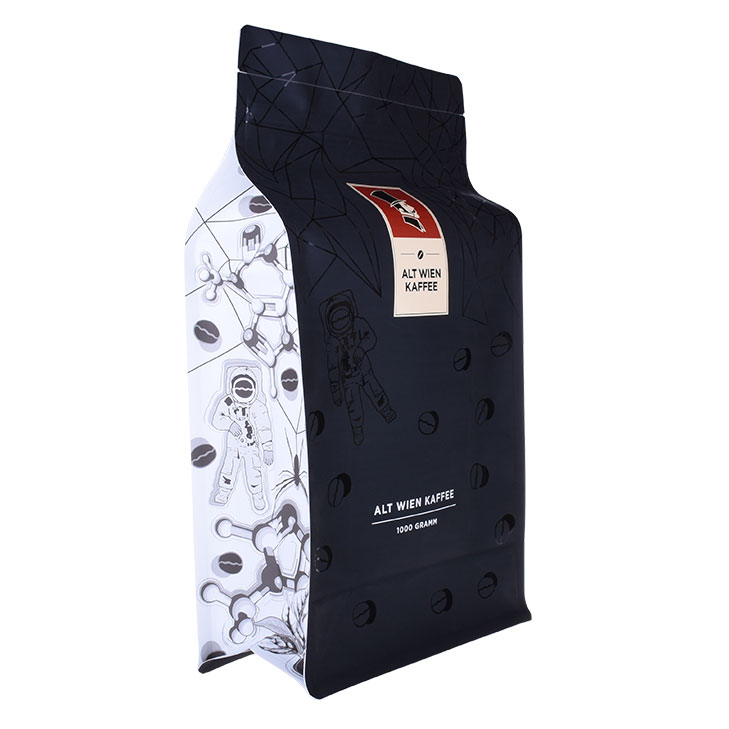
Eco-friendly flat bottom coffee bags are designed with materials and features that prioritize environmental sustainability and minimize their impact on the planet. Here are some eco-friendly aspects of flat bottom coffee bags:
Biodegradable Materials: Some flat bottom coffee bags are made from biodegradable materials, which means they can naturally break down and decompose over time without causing harm to the environment.
Compostable Materials: Compostable flat bottom bags are designed to break down into nutrient-rich compost when disposed of in industrial composting facilities. This reduces landfill waste and contributes to soil health.
Recyclable Components: Certain eco-friendly flat bottom bags are made from materials that are easily recyclable through established recycling programs. This encourages proper disposal and reduces waste.
Renewable Resources: Bags made from renewable resources, such as plant-based materials like cornstarch, sugarcane, or bamboo, have a lower carbon footprint compared to bags derived from fossil fuels.
Reduced Packaging: Eco-friendly bags may be designed to use minimal packaging material while still providing effective protection and preservation for the coffee inside.
Water-Based Inks: Printing on these bags can use water-based or soy-based inks, which are more environmentally friendly compared to traditional petroleum-based inks.
Carbon Footprint Reduction: Some manufacturers focus on energy-efficient production processes to reduce the overall carbon footprint of the bags' manufacturing.
Minimalist Design: Eco-friendly bags often feature minimalist designs that use fewer resources and chemicals in the printing process.
Sustainable Practices: Brands that offer eco-friendly bags may also adopt sustainable business practices, such as using renewable energy sources and supporting ethical sourcing.
Transparent Information: Brands can provide transparent information about the eco-friendly aspects of their bags, educating consumers about the environmental benefits of their choices.
Promotion of Sustainability: Using eco-friendly packaging aligns with consumer demand for more sustainable products and can attract environmentally conscious customers.
It's important to note that while eco-friendly flat bottom coffee bags offer environmental benefits, their overall impact depends on various factors including production methods, disposal practices, and the specific materials used. Brands and consumers alike play a role in making sustainable choices that contribute to a healthier planet.
What are flat bottom coffee bags?
What size options are available for flat bottom coffee bags?
Why do flat bottom coffee bags have a degassing valve?
What types of coffee are suitable for this packaging?
Are flat bottom coffee bags eco-friendly?
Can I reseal the flat bottom coffee bags?
How do I choose the right size of flat bottom coffee bag?
Are flat bottom coffee bags suitable for online sales?
Can I customize the design of flat bottom coffee bags?
Do flat bottom coffee bags have any advantages over traditional packaging?
Address: Rm603. Yuanyang Building, No. 1008 of Heshan Avenue, Shaping, Jiangmen, Guangdong, China. Compostable coffee bags, biodegradable coffee bags, resealable coffee bags are made by coffee bags factory China